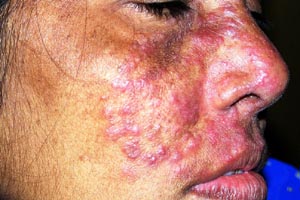From 11-15 April 2011, five day long residential training on “Climate Change, Mainstreaming Disaster Risk Reduction (DRR) and Popular Theatre” was organised for five Nepali partners NGO’s staff at Chetana Kendra Training Center , Banepa , Nepal Bangladesh
 |
| Trainee Groups |
At the outset of the training, the participants indicated their expectations from the training. They expected to learn the following from the training:
· Primary concept about Weather, Climate, Climate Change, causes and consequence of climate change, How to combat Climate Change, Climate Change adaptation.
· Types and concepts of Disaster Risk Reduction
· The process of Mainstreaming Disaster Risk Reduction
· National and International policies on climate change
· Relation between the project and other current DRR and CCA activities being implemented in South Asia (By the Bangladesh, Nepal
· Popular Theater & it’s brief history
· Relation between Popular Theater, Climate Change
· Making of a popular Theater
The discussion and presentations were interesting; understandable. The training course was mainly covered the issues of climate change, mainstreaming DRR and popular theatre. The major topics of the training were as follows:
1. Climate Change: Weather, Climate, Climate Change, Atmosphere, Greenhouse Effect, Greenhouse Gases, Countries are the largest GHG emitters
2. The expected impacts of Climate Change on South Asia : Impacts on livelihoods, Health, Education, men and women
3. Linkage between Disaster Risk Reduction and Climate Change
4. Climate Change Refuge
5. Climate Change Adaptation and mitigation
6. Some new concepts about : Carbon Trading, Carbon Credits, Carbon Taxes, Carbon Sinks
7. National and International agreement, policy, and strategy on Climate Change
8. Disaster Risk Reduction (DRR) and Cycle of Disaster Risk Reduction
9. Difference between mainstreaming and cross-cut
10. Mainstreaming DRR and DRR policy
11. Mainstreaming DRR at organizational level and successful steps of mainstreaming DRR
12. Developing a Action Plan on implementing Mainstreaming DRR
13. Popular Theater & it’s brief history
14. Types & characteristics of Theater
15. Short briefing on Popular Theater - Types & Characteristics of Theater, Factors of popular theater, Acting, Faith, Folk Culture and Different types of forms
16. Popular Theater, Culture & Development
17. Popular Theater, Climate Change and Adaptation
18. Making of a popular Theater (Steps of making a Popular Theater) -
(Group formation, Message identification, Way of sending message, strategy to raise the public voice, Story selection method, Character Selection, Sequence, Selection of costume & Profs, Stage Decoration, Rehearsal & final presentation, Evaluation & Feedback )
19. Express the conflict & social conflict by the popular theater
20. Drama and the performer (Cultural Life, Responsibilities of a poplar theater performer, Sense of space, Follow & Observation, Presentation Process
21. Evaluation - (Discussion within in a group and after stage presentation discussion based on audience opinion)
For easy & clear understanding, different methods were used in training sessions. Facilitators tried to ensure the active participation of all participants in the training session. Following methods were used:
· Lectures
· Discussions (Groups, pairs and open)
· Brain storming
· Peer groups
· Question & Answer
· Games
· Role play
 |
| Group Work |
 |
| Group Discussion |
The Strengths of the training:
· Participatory methods were practiced.
· Participants’ were very enthusiastic.
· Learning material was supplied in every session.
· Class room facilities and environment was friendly.
· The training programme was well organized.
· Support facilities were good
· The facilitators and participants’ relations were very positive for learning.
Evaluation of the training:
After the closing session of training, all participants express their feeling about the training. They said that they were very happy with the training, they mentioned that the training was good and easy to understand, that the trainers have vast knowledge about the content and that their attitudes were also very friendly. Participants were confident that they can apply the knowledge in their work in future. Although they were very happy with the training content, they also felt that the time allocation of the training could have been longer. They also suggested that examples from all over the world would help their understanding of the material. This suggestion was very helpful to the trainers who tried to use more examples from outside Bangladesh
Most of the participants enjoyed the session & learned in friendly and joyful environment. The closing sessions of this training course were held on 15th April. Training course was concluded by a closing statement from Mr. Tilottam Paudel, the President of JCYCN. He thanked and congratulated all participants and also thanked to the facilitators from Concern Universal - Bangladesh
The training course ended smoothly and purposefully after certificate given ceremony.
 |
| Training Certificate |






